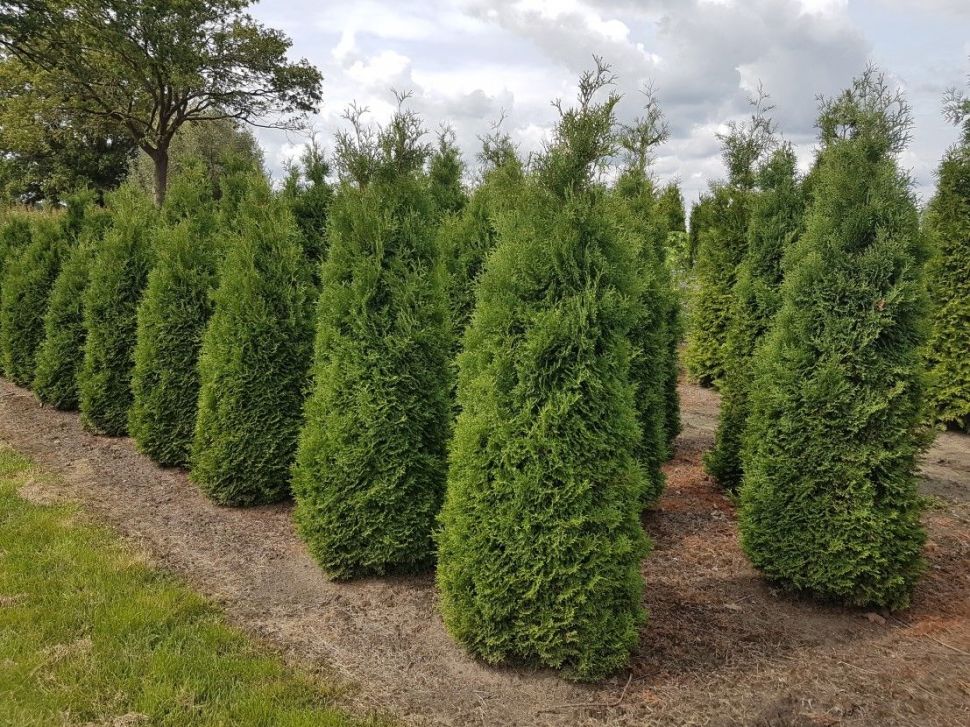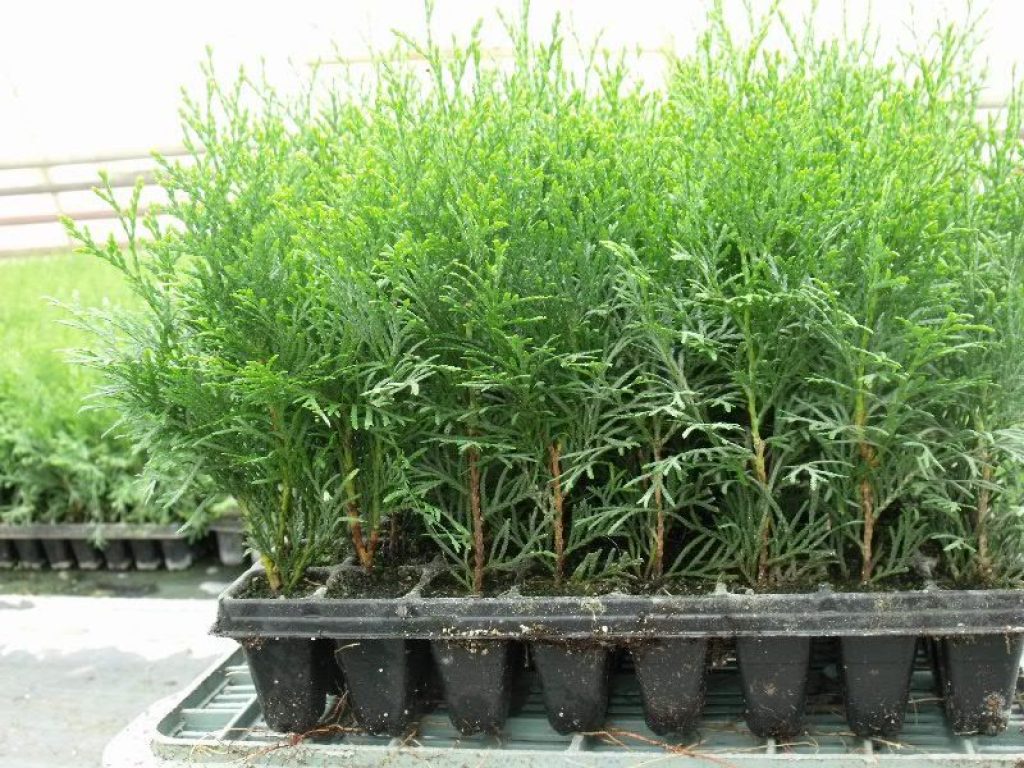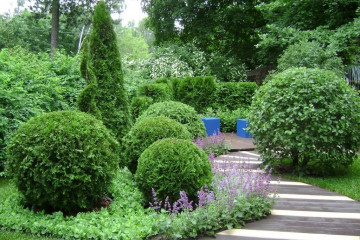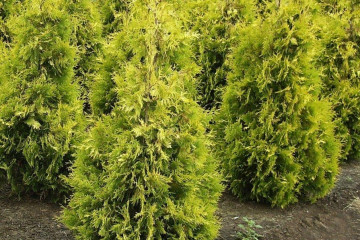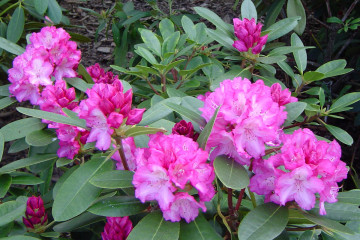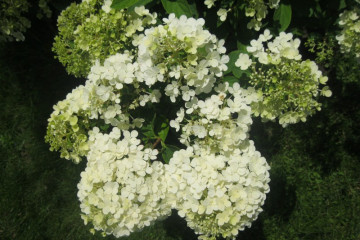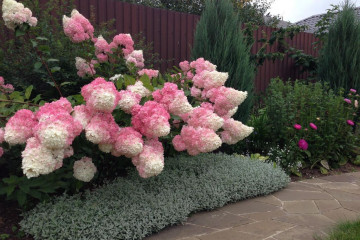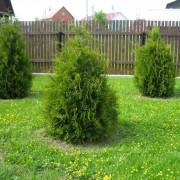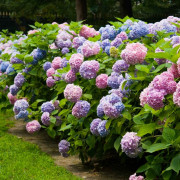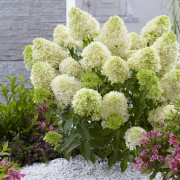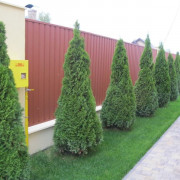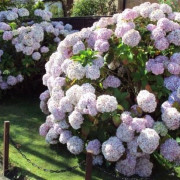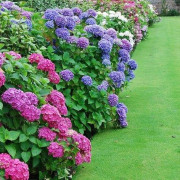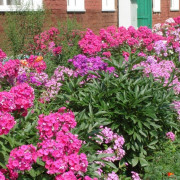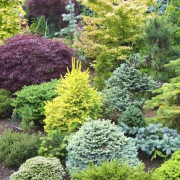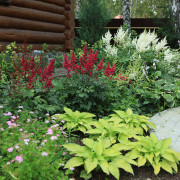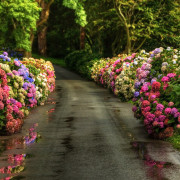Tuya Holmstrup (Holmstrup) - description and dimensions
Content:
Thuja Holmstrup (whose description is often mentioned in landscape design) is one of the most picky and beautiful conifers that can be grown on the site. It is also loved by gardeners for its interesting cone shape. In addition, thuja can be easily grown by yourself.
Thuja Holmstrup (Holmstrup) western
Thuja western (Holmstrup Thuja Occidentalis) is increasingly used in landscape design. This shrub is quite easy to care for, it feels comfortable both in the city and in the country. Versatile in terms of design: suitable both as a hedge and decoration of a flowering flower bed.
Description and dimensions
Thuja Holmstup (Holmstrup) is loved by gardeners for its appearance, rich color. This variety is an evergreen coniferous shrub bred specifically for on-site cultivation.
Grows quite tall. For 10 years of growth, the shrub can reach 1.5-2 m, and in diameter 55-65 cm. Each growth is from 14 cm, and the maximum size can reach 4 m (100-120 cm in girth).
Tuya Holmstrup should not be pruned often, but she still needs proper care. Pruning helps to keep the shrub neat and dense.
Advantages of the variety:
- low growth rate;
- cold resistance;
- versatility.
How fast it grows
Thuja Holmstrup grows rather slowly. With proper care, its growth will increase by 10-14 cm every year. After 10 years, there will be a 1.5-meter plant on the site.
Planting and leaving
Planting ephedra begins with the selection of a place for it. The shrub tolerates the lack of light well, but it is still better to choose a more illuminated place for it. Prolonged absence of light negatively affects the plant: the needles deteriorate, turn pale and thin. Thuja loses its beautiful appearance.
An excellent place for planting shrubs will be an area protected from wind and drafts. If this is not possible, a small partial shade will do.
Next, the soil is selected. The best option is loose and fertile. It must be sufficiently air and moisture permeable. If you grow ephedra in "heavy" soil, where moisture will linger, its roots are likely to rot.
You need to carefully choose a thuja for planting. It is best to purchase it from proven nurseries. Before you buy a seedling, pay attention to its appearance:
- the roots must be flexible and strong, without damage and obvious traces of pests;
- strong branches that should grow upward;
- needles of a rich green color, does not crumble at the slightest touch.
Thuja is a rather unpretentious plant, but, nevertheless, requires minimal effort. Without it, the ephedra will quickly lose its color, become painful and easily accessible to pests. Leaving implies standard measures, like for any other decorative tree or bush:
- watering mode;
- top dressing;
- weeding;
- pruning;
- preparation for cold weather.
It is imperative to loosen the soil, since this saturates it with oxygen.This is done periodically, while caution should be exercised, since the root system of the thuja is superficial, and deep loosening will damage it. You also need to eliminate weeds in time.
Pruning for the purpose of shaping is carried out once every 2 years. If diseased shoots have appeared on the plant, or the branches have been damaged, they are removed immediately, carrying out sanitary pruning.
How to plant
Landing is carried out as follows:
- Prepare a pit. It should be 10 cm larger than the thuja container. The standard size for comfortable growing is 60 × 60 × 80 cm.
- Then a drainage layer is made at the bottom.
- The harvested soil is poured onto it. It can be a mixture of peat, ordinary earth and sand. After it is watered abundantly and wait until the water is absorbed.
- The thuja is pulled out of the container along with the soil on the roots, moved into the hole, while the neck is not deepened. The soil must be watered again in such a way that the soil, in which the roots were, also becomes moist.
- After planting, the land near the bush is compacted, thereby securing the position.
Watering mode
Thuja western Holmstrup can tolerate dry periods, but it is better not to forget about regular watering. As a result of a lack of water, thuja dries up and dies, like any plant. One shrub requires 10 liters of water. In total, the soil needs to be moistened 1-2 times a week.
Top dressing
If during planting the soil was fertilized, then in the next couple of years no additional fertilizing is needed. When the ephedra has already matured, two years later they begin to feed. This happens in spring and autumn. As a top dressing, a special mixture for conifers is used. It is better to avoid those that contain nitrogen, it damages the plant, making it dull and loose.
Features of summer care
If the summer is hot, it is recommended to water the thuja more often than usual. Watering is not required during heavy rains. Care in the warm period is very simple: you just need to feed the plant on time (in spring), do not forget to moisten the soil when necessary, and remove damaged or diseased shoots.
Preparing thuja for winter
Thuja Holmstrup is a frost-resistant plant and is able to withstand temperatures down to -30 ° C. In regions with mild and cold winters, shelters are not required for them. Only young plants that were planted not so long ago will need protection. For this, materials such as burlap and rope are used. Ephedra wrap around and fix the material so that there is free space for air. You can also apply mulch and put it on the trunk at the base, this will help with melting snow and close access to rodents.
Reproduction of thuja Holmstrup
Tuya Holmstrup can be grown by hand. This can be done in two ways: cuttings and seeds. Growing shrubs from seeds is used somewhat less often, it requires more effort and time.
For growing from seeds, you will need thuja cones. They are harvested in the fall and laid out to dry. After drying, they open up, so you can easily get the seeds. The resulting seed is wrapped in fabric material and left until winter. It is not recommended to store them for a longer period, since the percentage of germination will decrease.
After the snow falls, the fabric with the seeds is buried in it until the onset of spring. If this is not possible, then the refrigerator will help out the gardeners (the temperature is not higher than 4 ° C). In spring, hardened seeds are sown in the furrows, keeping a distance of about 14 cm.The plantings are watered and covered with mulch (peat, sawdust).
Propagation by cuttings
Cutting is an easier way to grow thuja Holmstrup at home. How to do it right:
- First you need to cut off the shoots. This is done either in early spring or in late autumn before the first frost.
- Shoots are cut with a sharp knife with a part from the trunk (small heel). The length of the cuttings for further normal growth should be about 15 cm. The outgrowths from the bottom of the shoot are removed.
- It is recommended to keep the branches in the root solution overnight. Only then are they planted in the soil mixture.
- The soil mixture (consisting of peat, sand, garden soil) is heated in an oven or microwave. Then cuttings are planted in it at a slight angle of 20-30 °. Water and cover with a jar or bottle, forming a small greenhouse. Warm soil will contribute to the greenhouse effect, it also needs to be moistened often, but not much, so that moisture does not stagnate.
- The presence of a sufficient amount of light is imperative. To do this, you can purchase a phytolamp.
Why does thuja turn yellow
Tuya Holmstrup, based on the description, is unpretentious, but it can still suffer and lose its beauty for many reasons, one of which is insufficient care. Sometimes the causes of yellowing are natural - the change of seasons. In this case, by the beginning of the warm period, the ephedra will regain its rich color.
However, there are other reasons as a result of which thuja changes its color:
- sunburn due to lack of water;
- lack of space for the growth of the root system;
- wrong soil;
- lack of feeding or its poor quality;
- the presence of pests: aphids, ticks.
Also, yellowing can occur due to diseases: fusarium, brown shute, etc. Insecticides will help from pests, and special preparations for diseases: both are sold in flower shops.
Thuja Holmstrup is an excellent decoration for almost any garden. Due to its unpretentiousness and interesting shape (which can also be adjusted), it is one of the most commonly used in landscape design.
* Prices are for July 2019
